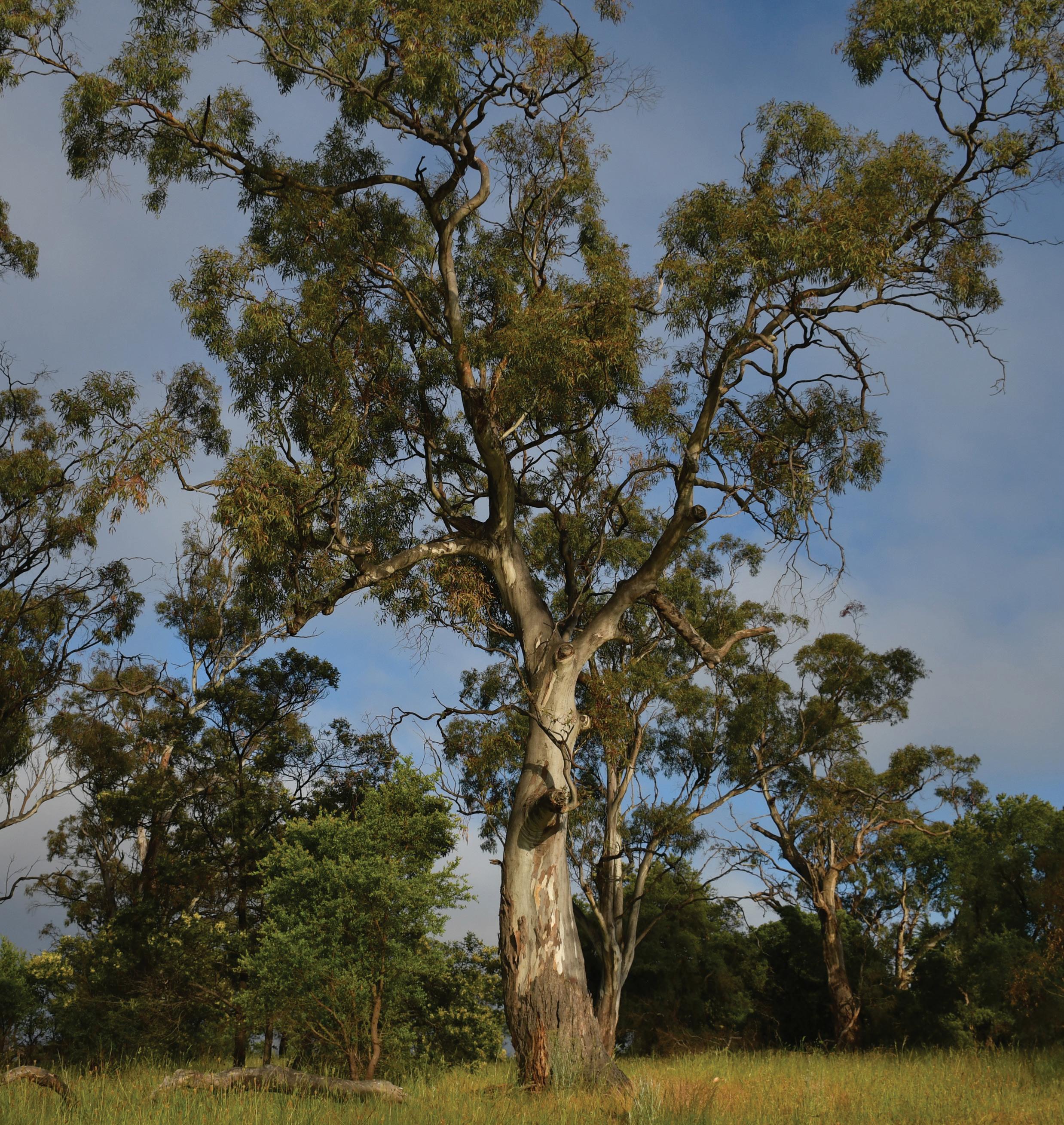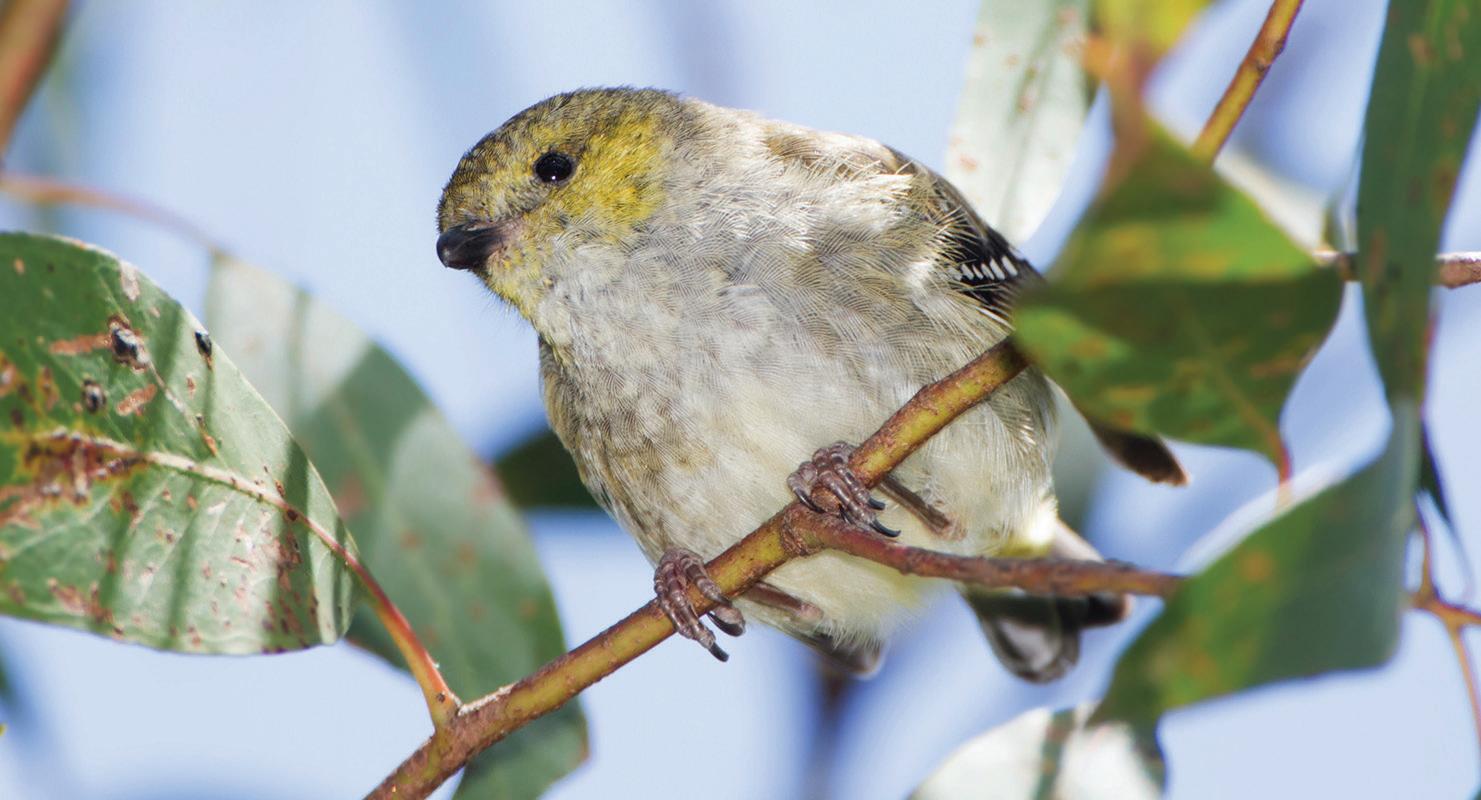
3 minute read
White gums in decline
Can we stop white gums falling?
By Pip Jones, Team Member Fire & Biodiversity
The mighty white gum, Eucalyptus viminalis, is a mainstay of our coastal heathlands, low-ranging hills and dry sclerophyll forests, and an important component of Tasmania’s wet sclerophyll forests, particularly the threatened Eucalyptus viminalis wet forest.
An expert shape-shifter, it can take the form of a hardy mallee shrub, a 90-metre-tall old-growth giant towering above temperate rainforest or a sprawling woodland tree sheltering an enormous diversity of wildlife, including the endangered fortyspotted pardalote.

The endangered forty-spotted pardalote. Photo: JJ Harrison
But in the past decade this magnificent gum species has been in steep decline. The white gum woodlands of Tasmania’s Midlands have become vanishingly rare and bushlands across the north and east of the state are transforming at an alarming pace. Ginger tree syndrome is taking down these giants, and climate change is the cause.
Our white gums are falling victim to heatwaves that have gripped the state more frequently and for longer periods.
During long, hot spells, a white gum’s leaf stomata can’t regulate the amount of moisture lost and it becomes affected by acute heat stress, causing the tree to rapidly shrink in response. Fissures are created between the gum and the bark, which then bleed red-coloured sap – these ginger-coloured stains on the stem are a sign the tree is already beyond repair.
How can we protect our Eucalyptus viminalis woodlands and conserve these precious habitat trees into the future? The answer may lie in the trees’ DNA.
Future ecological restoration projects may see the use of genetic traits from dry-zone Eucalyptus viminalis to climateproof our white gum woodlands. Diversifying our white gums with genetic material from drier areas such as Ross and possibly even Victoria may be the key to protecting this species for the future.
So far, southern Tasmania is less affected by ginger tree syndrome than the north of the state, but time is running out.
UTAS PhD candidate Erin Bok has been researching the effects of climate change on the Eucalyptus viminalis on the Queens Domain with one particular critter in mind: the forty-spotted pardalote.
This tiny endangered bird is entirely reliant on Tasmanian white gum for food – specifically the sugary ‘manna’ produced by the tree, and the insects it hosts.
The regeneration of climateready Eucalyptus viminalis may be critical to the forty-spotted pardalote’s survival. Cracking the white gum’s genetic code could be the key.

White gums on the Queens Domain. Photo: John Sampson







